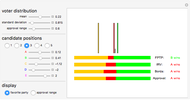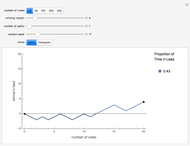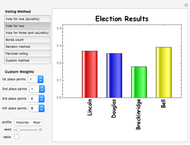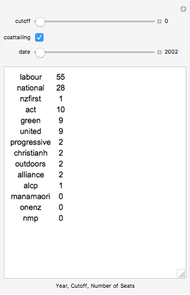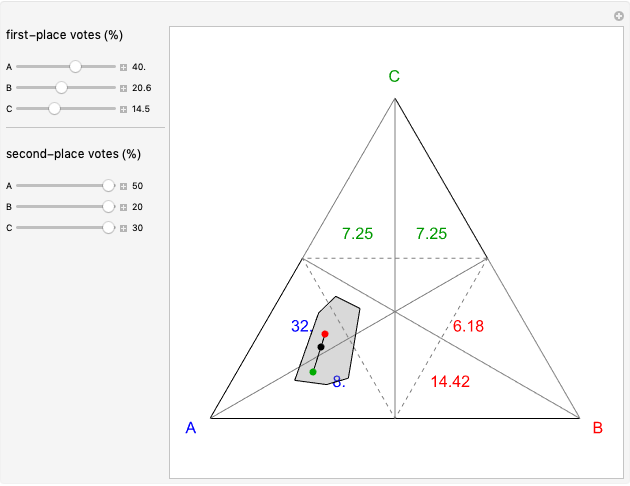Saari Triangles for a Three-Candidate Election

Requires a Wolfram Notebook System
Interact on desktop, mobile and cloud with the free Wolfram Player or other Wolfram Language products.
Use the sliders to enter the percentages of first-place and second-place votes in a three-candidate election. The gray area is the approval hull, which shows the set of all possible approval voting results based on your input. Inside the gray area is the "procedure line," which shows results using different positional voting systems: from the plurality result (green) to the anti-plurality result (red). The black point is the Borda count result. Using a particular system, the victor of an election is the candidate for whom the point is closest to the vertex A, B or C.
Contributed by: Linh Nguyen (August 2022)
Open content licensed under CC BY-NC-SA
Snapshots
Details
Snapshot 1: a decisive election; candidate A wins under every positional system and most possible approval voting scenarios
Snapshot 2: a close election; candidate C wins the plurality vote, while B wins the anti-plurality vote and A wins the Borda count
Snapshot 3: a polarized election; A and B are essentially tied under the plurality vote, while C is a clear anti-plurality winner
Permanent Citation







